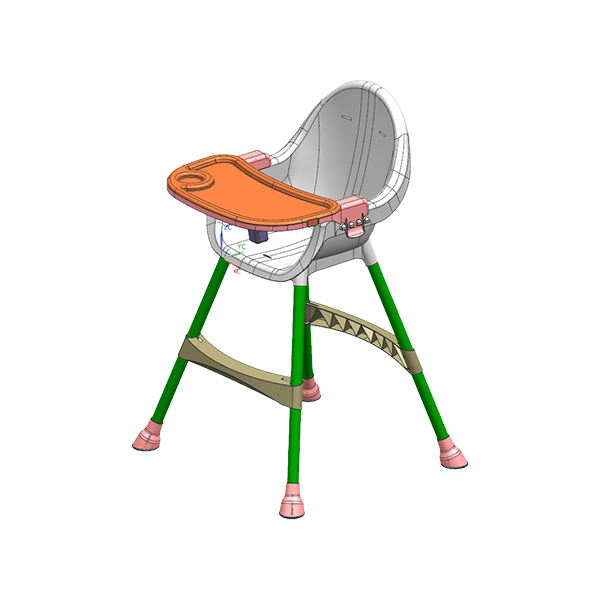Upper pole: the upper end point of the up and down movement of the press slider. Lower pole: the lower end point of the up and down movement of the press slider. Burrs: sharp protrusions on the edge of the punched section after punching. Burr surface: The plane of the blanking part with burrs on the edge. For blanking, the burr surface is the plane that contacts the punch; for punching, the burr surface is the plane that contacts the die. Rough surface: The rough section of the punched part that is torn). Neutral layer: refers to a layer of material with zero strain in the bent stamping. Lug: The lug on the edge of the upper mouth of the drawn piece. Neutral Layer Coefficient: The system used to determine the location of the neutral layer. Double-sided gap: The gap from one side to the other side of the opposite side or the sum of the gaps on both sides. Outlet device: A device that makes the punched process (sequence) parts out of the mold. Positive springback: The springback with an increased radius of curvature after the forming punch is taken out of the die, or the springback when the material entity increases after the punched piece escapes from the die. Stamping: The general term for the blank after one or more stamping processes, that is, the collective term for process parts and workpieces. Glossy: The bright section of the blanked part that is cut out. Springback: There are two types of springback, one is the difference between the size of the formed punch after it is taken out of the mold and the corresponding size of the mold. For curved parts, it is generally expressed as an angle difference or a radius difference. The other is the difference between the outer dimension of the blanking piece escaping from the die and the corresponding dimension of the die or the difference between the inner dimension and the corresponding dimension of the punch. Closed height: the distance between the upper plane of the upper die seat or the plane of the lower die seat when the die is at the lower pole of the working position. Stroke: the distance between the end points of the up and down movement of the press slider. It is customary to refer to the up and down movement of the press slider as the stroke, such as "stroke down", "stroke up", "strokes per minute" and so on. Negative springback: The springback in which the radius of curvature decreases after the forming punch is taken out of the mold, or the springback in which the material entity shrinks after the punching part escapes from the mold. Clamping and feeding device: a device that uses the clamping, loosening and reciprocating actions of a mechanical, pneumatic or hydraulic press to feed raw materials into the die. Life: refers to the number of times the die can be punched each time it is ground or the number of times the die can be punched before it is scrapped. The former is called sharpening life and the latter is called total life. Step distance: The distance that the raw material that can be used for multiple stamping is fed each time. Gap: The difference between the corresponding dimensions of the matched punch and die or the gap between them. One-sided gap: A gap from the center to one side or a gap on one side. Billet: Raw material that has not been stamped and is mostly used for one stamping. Blanks are sometimes called blanks or stock.
 Kelong company is a professional China Industrial Moulds manufacturers of various high-quality, high-precision and high-demand injection molds. Kelong covers an area of 28,000 square meters, with an annual output value of more than 68 million and more than 120 employees. Kelong has sodick mirror EDM, wire cutting , 5-axis machining centers, mold clamping machines and other high-precision equipment, and has established a complete sales network and customer channels in Europe, South America, the Middle East, North Africa, Southeast Asia and other regions. Kelong Mould has developed from an ordinary mould manufacturer to a one-stop procurement supplier from product development, mould manufacturing, custom Industrial Moulds to assembly. The company strictly controls quality, time and cost to create value for customers, and strives to be an excellent brand Industrial Moulds company based in China and serving the world.
Kelong company is a professional China Industrial Moulds manufacturers of various high-quality, high-precision and high-demand injection molds. Kelong covers an area of 28,000 square meters, with an annual output value of more than 68 million and more than 120 employees. Kelong has sodick mirror EDM, wire cutting , 5-axis machining centers, mold clamping machines and other high-precision equipment, and has established a complete sales network and customer channels in Europe, South America, the Middle East, North Africa, Southeast Asia and other regions. Kelong Mould has developed from an ordinary mould manufacturer to a one-stop procurement supplier from product development, mould manufacturing, custom Industrial Moulds to assembly. The company strictly controls quality, time and cost to create value for customers, and strives to be an excellent brand Industrial Moulds company based in China and serving the world.


 English
English Español
Español




.jpg?imageView2/2/format/jp2)
.jpg?imageView2/2/format/jp2)





